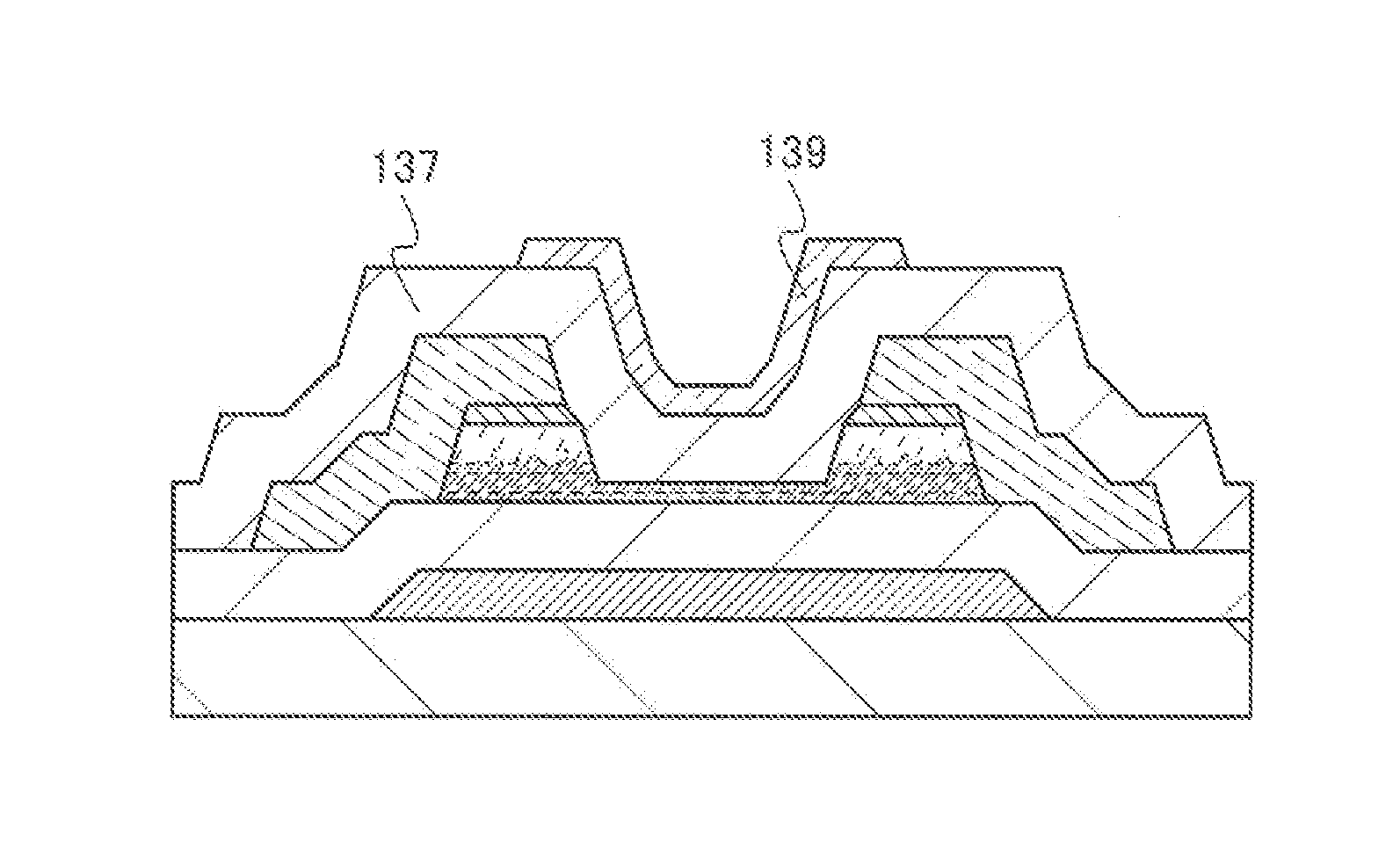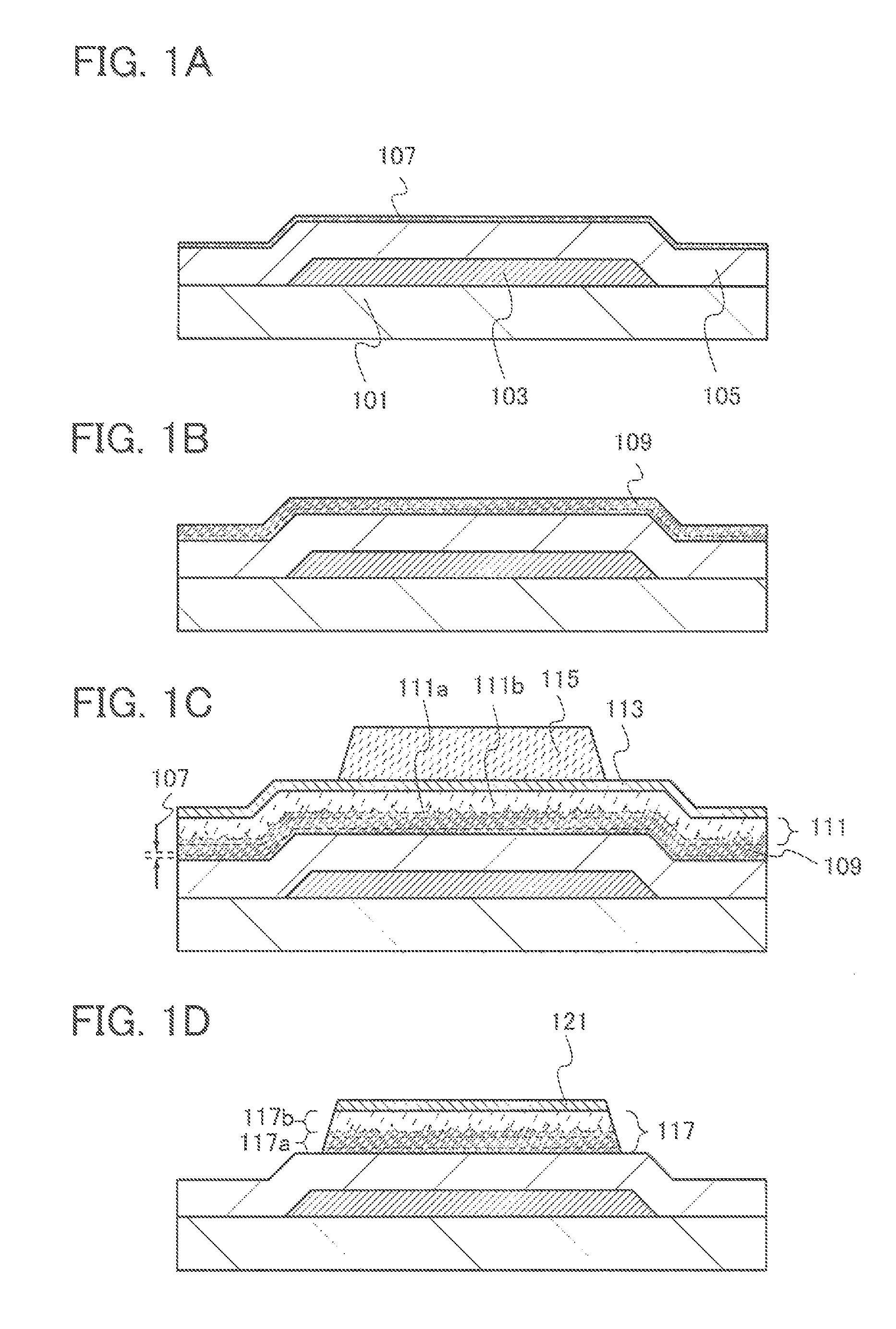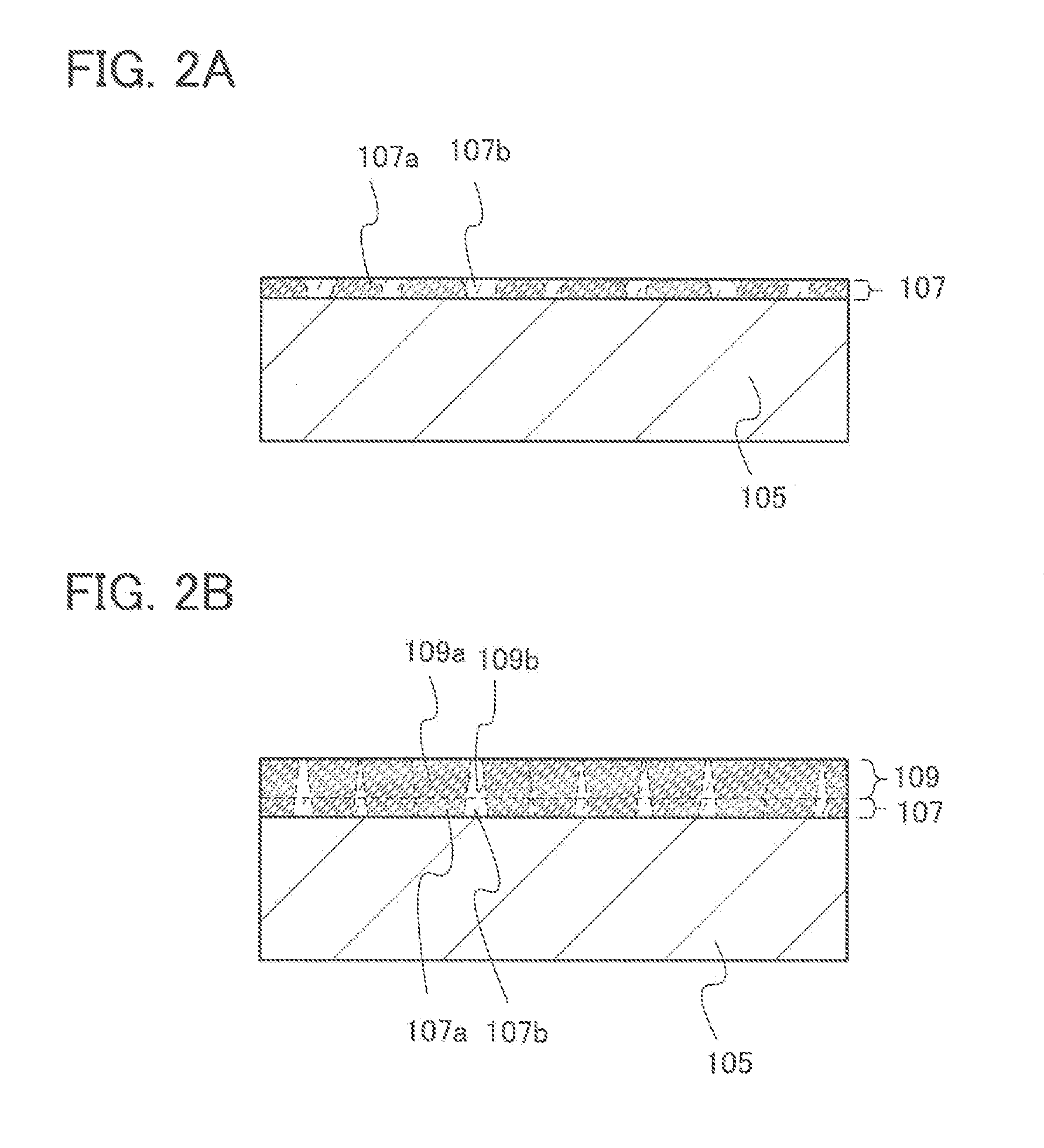Thin film transistor and manufacturing method thereof
a technology of thin film transistor and manufacturing method, which is applied in the direction of basic electric elements, electrical apparatus, and semiconductor devices, can solve the problems of high manufacturing cost, inability to obtain sufficient switching characteristics, and low field-effect mobility and low on-state current, and achieve high on-state current, low off-state current, and high field-effect mobility
- Summary
- Abstract
- Description
- Claims
- Application Information
AI Technical Summary
Benefits of technology
Problems solved by technology
Method used
Image
Examples
embodiment 1
(Embodiment 1)
[0044]In Embodiment 1, a manufacturing method of a transistor according to one embodiment of the present invention will be described with reference to FIGS. 1A to 1D, FIGS. 2A and 2B, FIG. 3, FIGS. 4A and 4B, FIGS. 5A to 5C, and FIGS. 6A to 6D. An n-channel thin film transistor has higher carrier mobility than a p-channel thin film transistor. Further, it is preferable that all thin film transistors formed over the same substrate have the same conductivity type because the number of manufacturing steps can be reduced. Therefore, in this embodiment, a method for manufacturing an n-channel thin film transistor is described.
[0045]As shown in FIG. 1A, a gate electrode 103 (also called a first gate electrode) is formed over a substrate 101. Next, a gate insulating film 105 which covers the gate electrode 103 is formed, and a first microcrystalline semiconductor film 107 is formed over the gate insulating film 105.
[0046]As the substrate 101, a glass substrate; a ceramic subs...
embodiment 2
(Embodiment 2)
[0124]In Embodiment 2, a method for manufacturing a thin film transistor, by which the off-state current can be further reduced as compared to Embodiment 1 will be described with reference to FIGS. 1A to 1D and FIGS. 7A to 7C.
[0125]In a similar matter to Embodiment 1, the semiconductor stack 117 as shown in FIG. 7A is formed through the process shown in FIGS. 1A to 1C.
[0126]Next, plasma treatment is performed in which the side surface of the semiconductor stack 117 is exposed to plasma 123 with the resist mask 115 left. In Embodiment 2, plasma is generated in an oxidation gas atmosphere or a nitriding gas atmosphere, and the semiconductor stack 117 is exposed to the plasma 123. Examples of the oxidation gas include oxygen, ozone, dinitrogen monoxide, water vapor, a mixed gas of oxygen and hydrogen, and the like. Examples of the nitriding gas include nitrogen, ammonia, nitrogen fluoride, nitrogen chloride, chloroamine, fluoroamine, and the like. Plasma generation in the...
embodiment 3
(Embodiment 3)
[0131]In Embodiment 3, a thin film transistor in which the off-state current can be further reduced as compared to that in the thin film transistor described in Embodiment 1 will be described with reference to FIGS. 8A to 8D.
[0132]In a similar manner to Embodiment 1, the process illustrated in FIGS. 1A to 1D and FIG. 5A is carried out, so that the conductive film 127 is formed over the gate insulating film 105 and the semiconductor stack 117. Then, as shown in FIG. 8, a mask 141 is formed using a resist by a photolithography step over the conductive film 127.
[0133]Next, as shown in FIG. 8B, the conductive film 127 and the impurity semiconductor film 121 are etched using the mask 141, so that wirings 129a and 129b which function as a source electrode and a drain electrode and a pair of impurity semiconductor films 131a and 131b which function as a source region and a drain region are formed. Further, part of an exposed portion of the amorphous semiconductor region 117b ...
PUM
 Login to View More
Login to View More Abstract
Description
Claims
Application Information
 Login to View More
Login to View More - R&D
- Intellectual Property
- Life Sciences
- Materials
- Tech Scout
- Unparalleled Data Quality
- Higher Quality Content
- 60% Fewer Hallucinations
Browse by: Latest US Patents, China's latest patents, Technical Efficacy Thesaurus, Application Domain, Technology Topic, Popular Technical Reports.
© 2025 PatSnap. All rights reserved.Legal|Privacy policy|Modern Slavery Act Transparency Statement|Sitemap|About US| Contact US: help@patsnap.com



